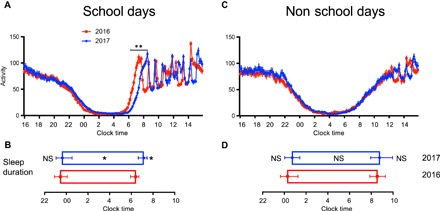Fig. 1. Delayed school start times result in later sleep offset and longer sleep.

Mean student activity waveforms and sleep summaries between years for school (A and B) and nonschool days (C and D). For both (A) and (C), there was a significant effect of time, year, and the interaction (see text). **P < 0.01, difference between years (Sidak’s comparisons). For (B), there is a significant delay in sleep offset (P = 0.0007), but not sleep onset (P = 0.0459), on weekdays in 2017 as compared to 2016, resulting in a significant increase of sleep duration on school days in 2017 (P = 0.0007); P < 0.017 threshold for significance for Wilcoxon signed-rank test corrected for multiple comparisons. The same analysis of sleep parameters on nonschool days shows no difference between years (D) [n = 84 (2017, school day) and n = 94 (2016, school day); n = 76 (2017, nonschool day) and n = 81 (2016, nonschool day)]. For (B) and (D), values represent median, and bars represent interquartile range. Sleep offset was also tested through generalized linear models (see text). Each student contributed at least five nights for the school-day data and three nights for the nonschool data. NS, not significant.
